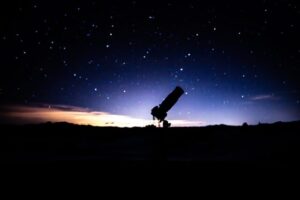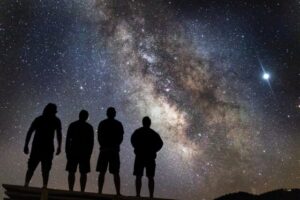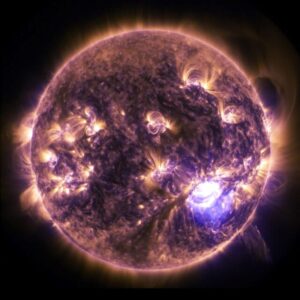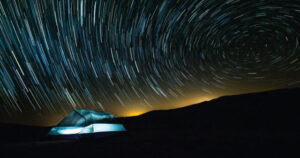Imagine a future spacecraft following New Horizons’ trailblazing path to Pluto, but instead of flying past its target, the next visitor touches down in the midst of tall mountains on the icy plains of Pluto’s heart.
There’s no need to...
Grooves and gashes associated with the Imbrium Basin on the moon have long been puzzling. New research shows how some of these features were formed and uses them to estimate the size of the Imbrium impactor. The study suggests...
This artist's illustration shows two Earth-sized planets, TRAPPIST-1b and TRAPPIST-1c, passing in front of their parent red dwarf star, which is much smaller and cooler than our sun. NASA's Hubble Space Telescope looked for signs of atmospheres around these...
Image of the Milky Way taken by the WISE space telescope. The circle is centred on the galaxy’s central region, while the inset shows an enhanced version of the same region with a clearer view of the X-shaped structure....
Image montage showing the Maunakea Observatories, Kepler Space Telescope, and night sky with K2 Fields and discovered planetary systems (dots) overlaid. An international team of scientists discovered more than 100 planets based on images from Kepler operating in the...
Schematic illustration of the proposed behaviour of gravity waves in the vicinity of mountainous terrain on Venus.
Winds pushing their way slowly across the mountainous slopes on the surface generate gravity waves - an atmospheric phenomenon also often seen in...
IMAGE 1: MeerKAT First Light image. Each white dot represents the intensity of radio waves recorded with 16 dishes of the MeerKAT telescope in the Karoo (when completed, MeerKAT will consist of 64 dishes and associated systems). More than...
This image was taken by the NASA/ESA Hubble Space Telescope’s Advanced Camera for Surveys (ACS) and shows a starburst galaxy named MCG+07-33-027. This galaxy lies some 300 million light-years away from us, and is currently experiencing an extraordinarily high...
The Progress 64 cargo craft launches on a two-day trip to the International Space Station. Credit: NASA TV
Carrying more than three tons of food, fuel, and supplies for the International Space Station crew, the unpiloted ISS Progress 64 cargo...
Credit: Contains modified Copernicus Sentinel data (2016), processed by ESA
The Sentinel-2A satellite takes us over the very eastern part of the Sundarbans in Bangladesh, in this natural-colour image.
A region comprising southern Bangladesh and a small part of the Indian...
Credit: X-ray: NASA/CXC/Univ. of Maryland/E. Troja et al, Optical: Lowell Observatory's Discovery Channel Telescope/E.Troja et al. Illustration: NASA/CXC/M.Weiss
Gamma-ray bursts, or GRBs, are some of the most violent and energetic events in the Universe. Although these events are the most...























